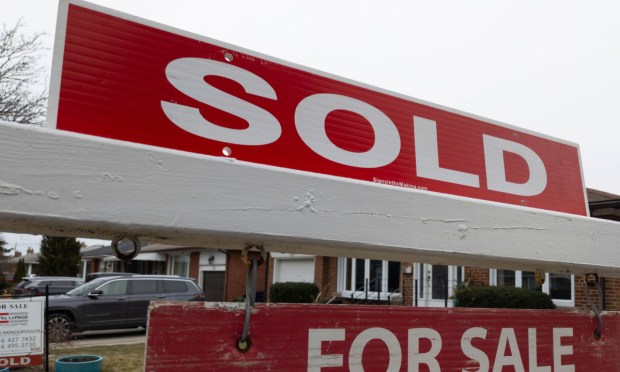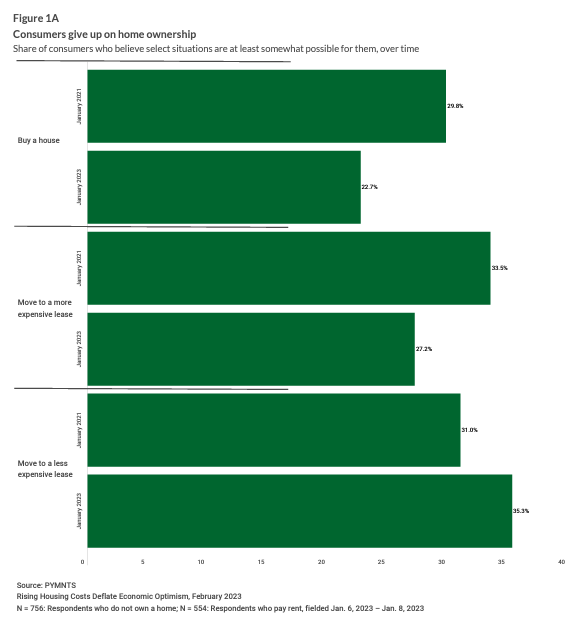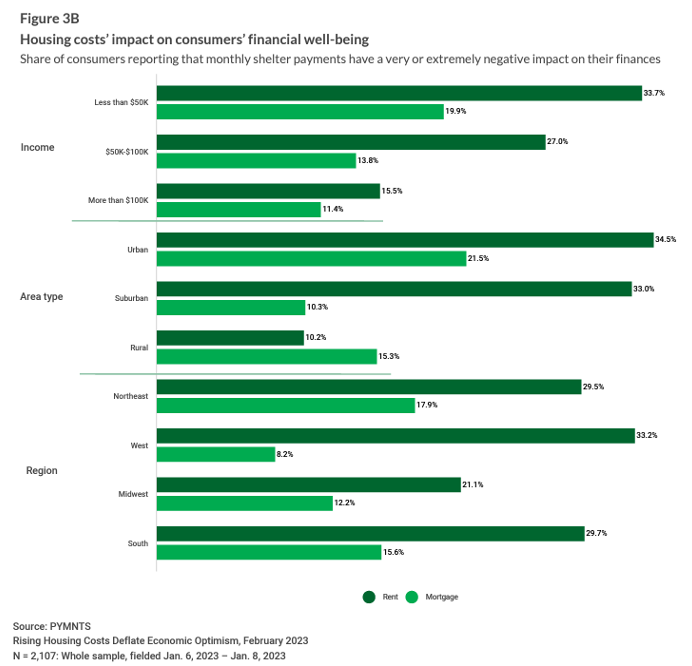Scarce Housing Inventory Adds to Millennials Already Low Homeownership Expectations

Lately, it seems that just when things started to look more promising for those seeking to purchase a home, a new set of discouraging numbers gets released. The latest round comes from Realtor.com’s Monthly Housing Market Trends report for April, estimating that housing inventory in the country’s top 50 metro areas is hovering at 48% less than pre-pandemic levels. Nationwide, there were 21% less listings over the month compared to the same period the previous year.

Potential homebuyers have already had to contend with such hurdles as a market that only seems to bounce between hot and ultra-hot as well as inflation constantly threatening to stretch into a recession.
Given these combined headwinds, there should be little surprise that consumer sentiment reflects such barriers, as noted in the PYMNTS’ January “Consumer Inflation Sentiment” report.
Here, it seems that consumer sentiment is simply reflecting current reality. Between January 2021 and January 2023, the share of consumers believing homeownership was still within reach dropped from 30% to 23%. Put another way, this 7 percentage-point drop represents a 27% decrease in consumers giving up on that aspect of the American Dream.
The biggest reason behind today’s record low inventory is that homeowners are more reluctant than ever to sell. Back in the halcyon days of sub-3% mortgages, motives to consider moving regularly included aesthetic or other such reasons. More often in today’s climate of much higher rates, homeowners may still move, but often this commitment requires more significant reasons, such as the occurrence of a life-changing event. It may otherwise make little sense to take on a mortgage rate that could more than double what was previously shouldered.

There is a silver lining here, however, for those consumers holding out on their homeownership goals a while longer. Rental prices, after seeing the same kind of wild growth as the single family property market, are continuing to cool. CoreLogic’s most recently released nationwide Single Family Rent Index reports that rent growth for the category has slowed to 4.3%, decelerating for the 11th month in a row. This dip could ease housing costs for many renters, or even put upgrading to a more expensive lease within their grasp. As demonstrated in the same January Consumer Inflation report, rising rental prices have caused significant strain on renting consumers across demographics, area types and regions.
In this for many frustrating real estate landscape, it may help to remember that the market, like every other, is defined by a cycle. And, as prices and rates go up, so will they come down again — just not as soon as many homebuyers have hoped.
